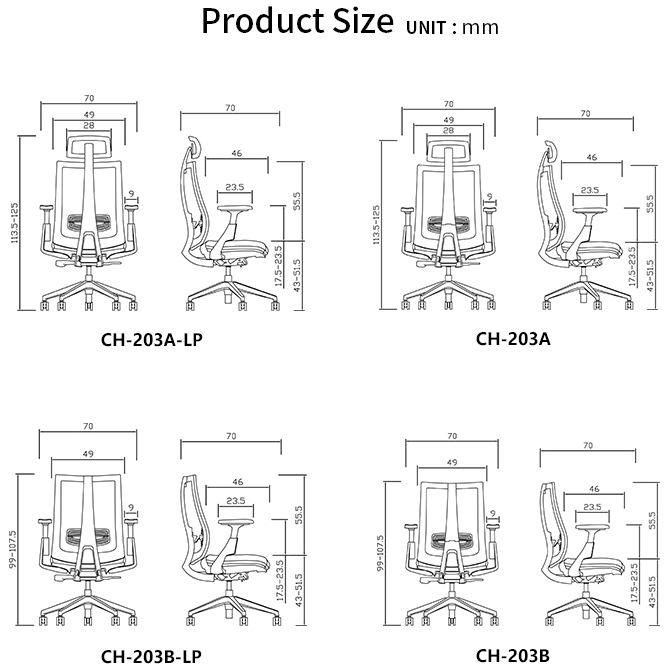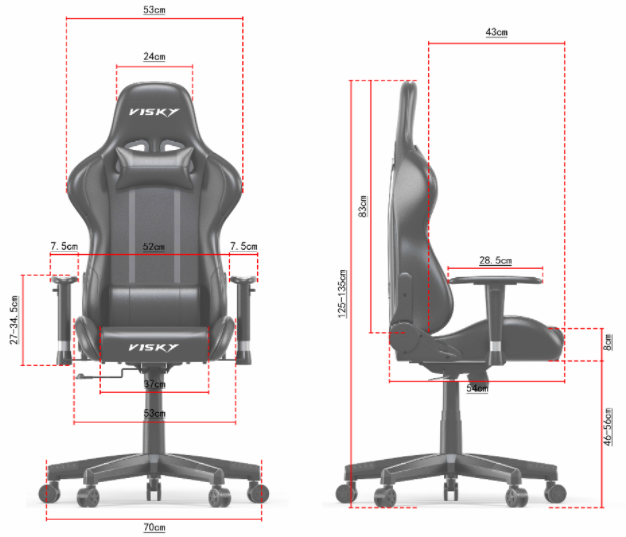According to the size of the normal chair in daily life, it is designed as:
Seat height: between 400-450mm;
Sitting width: generally between 400-500mm;
Backrest height: between 480-630mm;
The angle between the backrest and the sitting surface: 95°—105°.
1. The seat height of the standard chair size
1)Seat height refers to the vertical distance from the seat surface to the ground; if the seat surface has a backward inclination or a concave arc, the seat height refers to the vertical distance from the center point of the front edge of the seat to the ground. If the seat height is too high, the dangling legs will compress the blood vessels of the thighs; too low will cause physical fatigue. Practice has proved that the appropriate seat height is the height of the calf socket to the sole of the foot plus the heel thickness of 25-35mm, minus the activity margin of 10-20mm.
Namely: seat height H = calf socket height + heel thickness-proper clearance.
2)The national standard GB 3326-1997 stipulates that the seat height H is 400-440mm, and the size difference is 10mm. The maximum height of the soft seat surface is 460mm (not including the amount of seat sinking). The height of the sofa seat can be lower, so that the legs are stretched forward and the back is tilted, which is conducive to the natural state of the spine. The seat height of the sofa is generally 360-420mm.
2. The seat inclination and back inclination of the standard chair size
1)The angle between the seat surface and the horizontal plane is called the seat inclination angle α; the angle between the backrest and the horizontal plane is called the back tilt angle β.
2)The national standard GB 3326-1997 stipulates that the seat inclination angle α is 1-4 degrees (back chairs and armchairs), or 3-6 degrees (folding chairs), the angle difference is 1 degree; the back inclination angle β is 95-100 degrees ( Chairs and armchairs), or 100-110 degrees (folding chairs), the angle difference is 1 degree. For sofas, α is 3-6 degrees and β is 98-112 degrees; reclining chairs are even larger.
3. The seat depth of the standard chair size
1)Seat depth refers to the distance from the front edge to the rear edge of the seat surface. Too deep and too shallow will cause fatigue and discomfort to the calf and lower back. Practice has proved that the seat depth should be slightly smaller than the horizontal length of the thigh in a sitting position. which is:
2)Seat depth T=The horizontal length of the thigh in the sitting posture is over 60mm (clearance)
3)The national standard GB 3326-1997 stipulates that the seat depth T is 340-420mm (back chair), or 400-440mm (armchair), or 340-420mm (folding chair), and the size difference is 10mm. For sofas and other leisure seats, the seat depth can be slightly larger, 480-560mm due to the larger backrest slope.
4. The standard seat width of the chair size
1)The seat width should be able to fully support the arms and leave room. For armchairs, the inner width of the armrest is the seat width, which is generally determined by the person’s average shoulder width plus an appropriate margin.
2)Namely: front width of armrest B = shoulder width of human body + thickness of winter clothes + allowance for activity
3)The national standard GB 3326-1997 stipulates that the front width B of the armchair or folding chair seat is greater than or equal to 380mm, and the size difference is 10mm; the inner width B of the front edge of the armrest is greater than or equal to 460mm, and the size difference is 10mm.
Various chair size customization
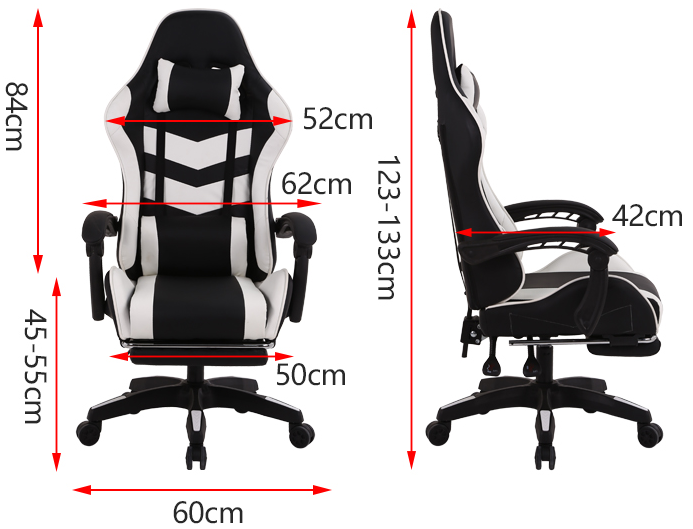
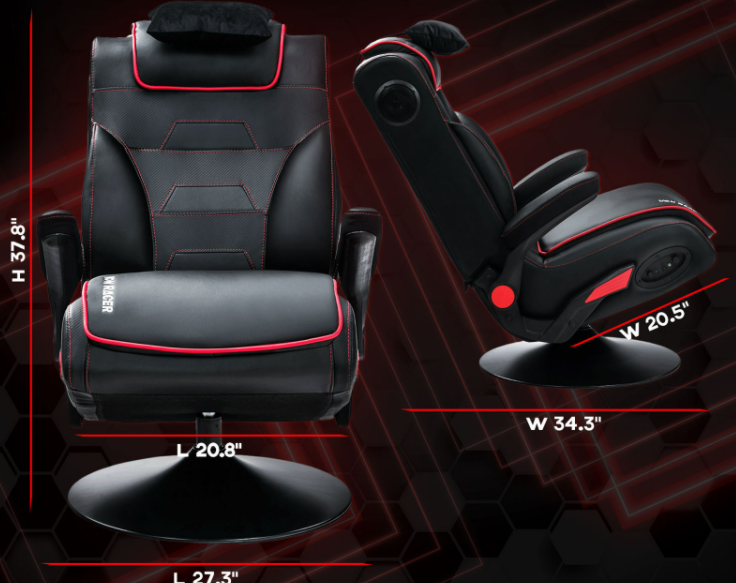
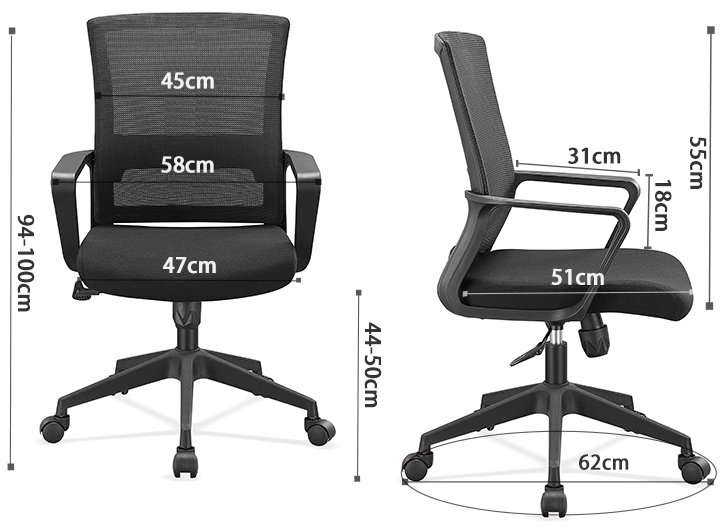
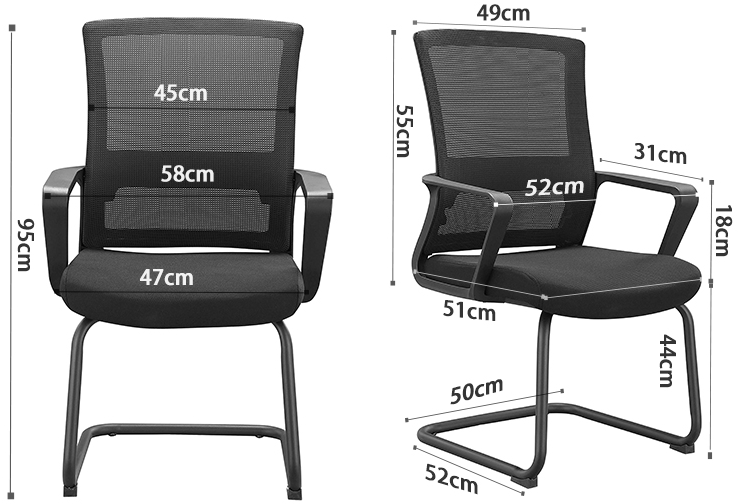
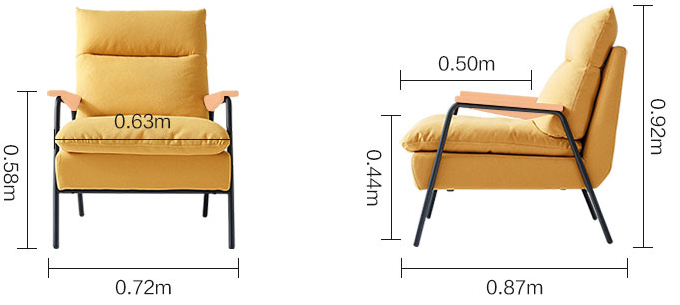
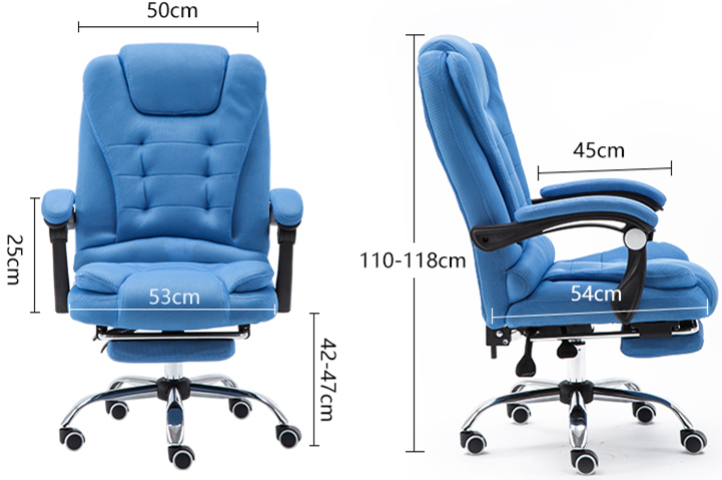
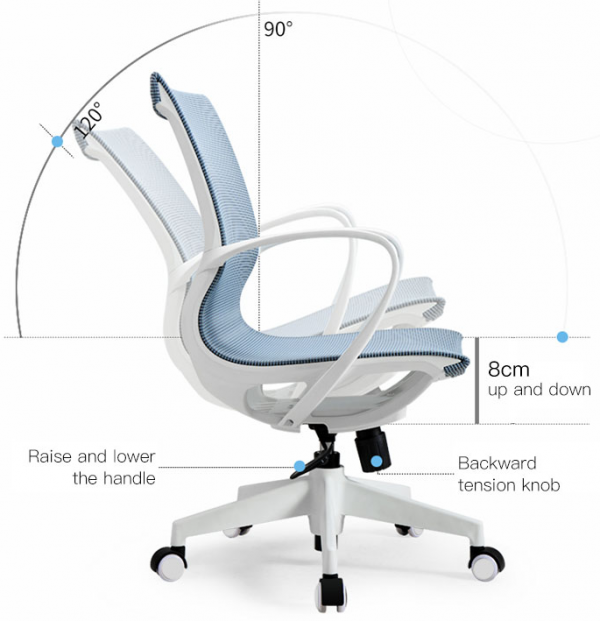
As a professional chair manufacturer, we warmly welcome OEM and ODM orders. We can custom any size of chairs as your requirement. Please kindly send us an email for getting more customized size information.
